Our Verdict
The 14-inch frame, in classic Razer Blade style, makes for my ideal gaming laptop form factor. Paired with the Ryzen CPU, and a reasonable GPU, the Blade 14 is a stunningly good, ultra-desirable machine with the power to cope with anything I could throw at it.
For
- Looks great
- Excellent all-round performance
- Ultra-portable ultrabook style
Against
- The only way to get Ryzen at Razer
- Higher-spec GPUs sacrifice performance
PC Gamer's got your back
There's no getting away from it, the Razer Blade 14 is one of the best gaming laptops around. But that's not to say it's perfect, because there are some definite caveats that have to be dropped in when talking about where it comes from, why it exists, and what that means for gaming performance.
This is the first AMD Ryzen-based gaming laptop from Razer, and its first 14-inch machine since back when Windows 8.1 was 'a thing'. Razer has been looking enviously at Asus' rightly lauded ROG Zephyrus G14 and, with the introduction of a Ryzen 9 5900HX CPU, it obviously felt the time was right to make its own mark at this smaller scale.
That's not to say the 15-inch Razer Blade laptops are portly—they're as close as you're going to get to a matte black MacBook gaming PC—but the svelte Blade 14 is only a tiny step up from the size of the gorgeous Razer Blade Stealth 13 range of Razer ultrabooks, and a decent chunk smaller than the large Blade 15 machines.
It is only a tiny bit thinner than the larger Razer laptops, but is a full 15mm shorter and more than 35mm narrower across its solid anodised aluminium frame. That makes it feel genuinely smaller than the Blade 15.
And I love the form factor.
CPU: AMD Ryzen 9 5900HX
GPU: Nvidia GeForce RTX 3060
Memory: 16GB DDR4-3200
Storage: 1TB Samsung 981a NVMe SSD
Screen size: 14-inch
Native resolution: 1920 x 1080
Refresh rate: 144Hz
Networking: Wi-Fi 6E
Battery: 61.6WHr
Dimensions: 16.8 mm x 220 mm x 319.7 mm
Weight: 1.78kg
Price: $1,799 | £1,799
Honestly, this is the gaming laptop spec for me, though I'm going to say something you might not want to hear: While you absolutely can fit this slimline notebook with an RTX 3080 GPU, you really shouldn't. I've picked up the Razer Blade 14 with Nvidia's RTX 3060 graphics silicon at its heart and, with a 100W TDP, and a 1080p 144Hz screen attached to it, I'm convinced this is the ideal version of what is effectively a gaming ultrabook.
Whatever you want to say about the chassis and the cooling it affords the internal components, performance in 2021 is inextricably linked to thermals. That means the restrictive confines of the Blade 14's design will inevitably deliver lower gaming performance from a GPU as hungry as an RTX 3080 than if it was used in the beefier 15-inch chassis.
Drop the RTX 3080 into a hulking brute of a Gigabyte Aorus notebook and you'll really see that GPU fly. Though you may not like the aesthetic, or even the noise it might generate, you'll have to appreciate the frame rates.
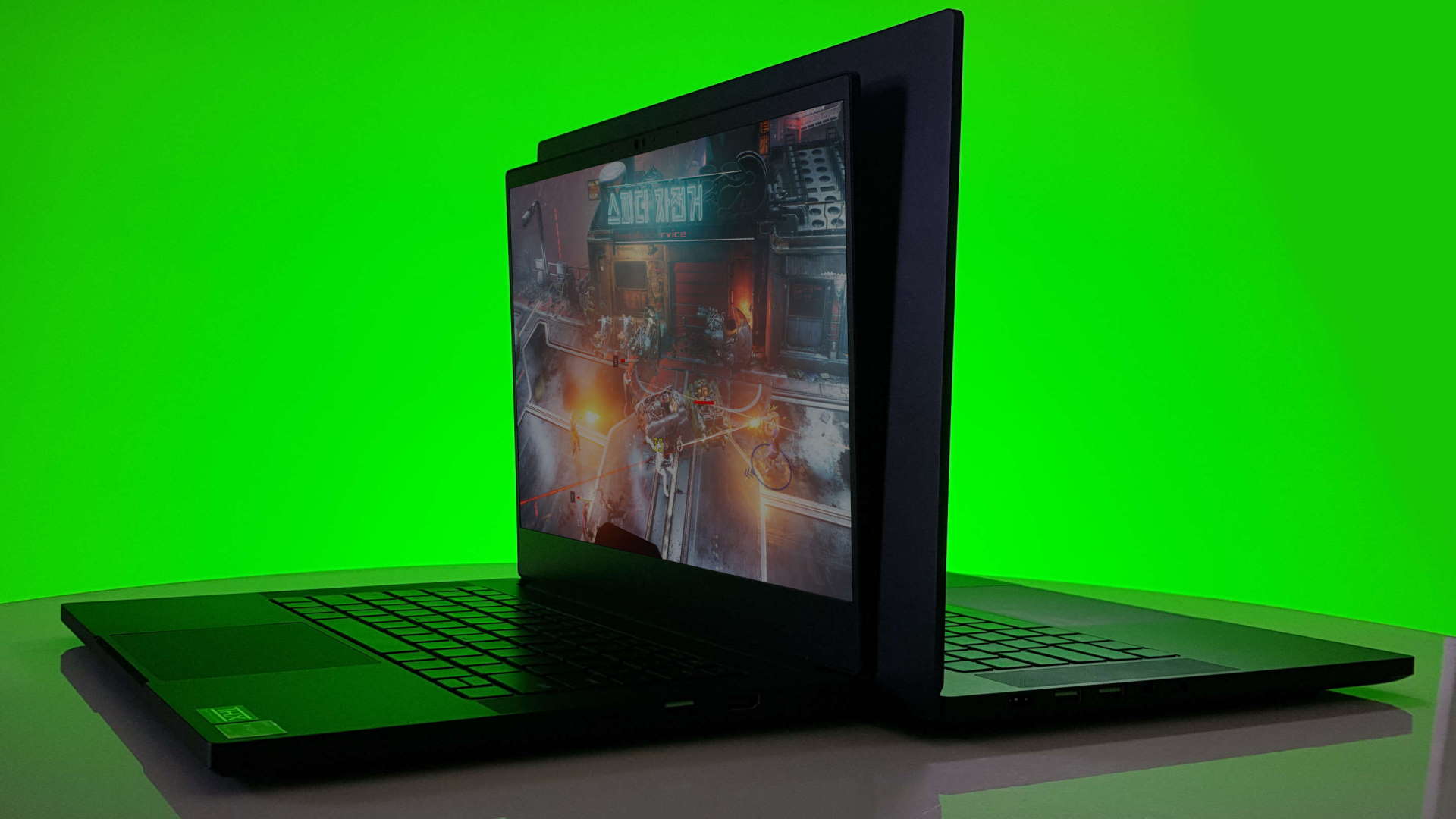
Performance in 2021 is inextricably linked to thermals.
But with an RTX 3060 inside it, the cooling doesn't limit its frame rates, certainly not in relation to any other gaming laptop we've seen sporting the same GPU. Of course you'll buy the Razer Blade 14 because of its shape, style, and size but, if you've spent out on an RTX 3080 version, it's going to be hard not to feel a sting from knowing you'll be getting noticeably slower gaming performance than your 15-inch laptop peers.
The graphics chip is always going to be something we spend a lot of time talking about with a gaming laptop, but it's the AMD Ryzen 9 5900HX that's brought us here in the first place. Despite the name, this is more like the Ryzen 7 5800X of the desktop AMD 5000-series CPUs. It comes with eight cores and 16 threads of processing power and a nominal max clock speed of up to 4.6GHz.
While it's not quite in the same league as its 12-core, 24-thread desktop namesake, the 5900HX is still one of the most powerful mobile processors around.
In the 14-inch frame of the new Razer Blade we were getting a strong 3.5GHz clock speed under all-core load, and with single-core loads we had our Zen 3 silicon hitting a thoroughly respectable 4.4GHz.
System performance
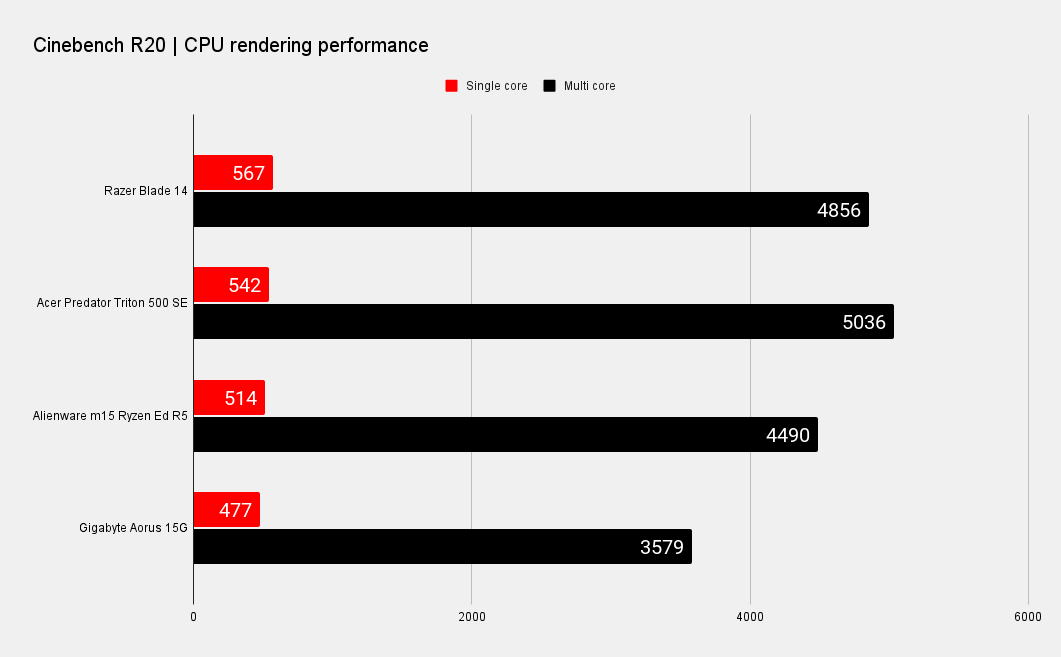
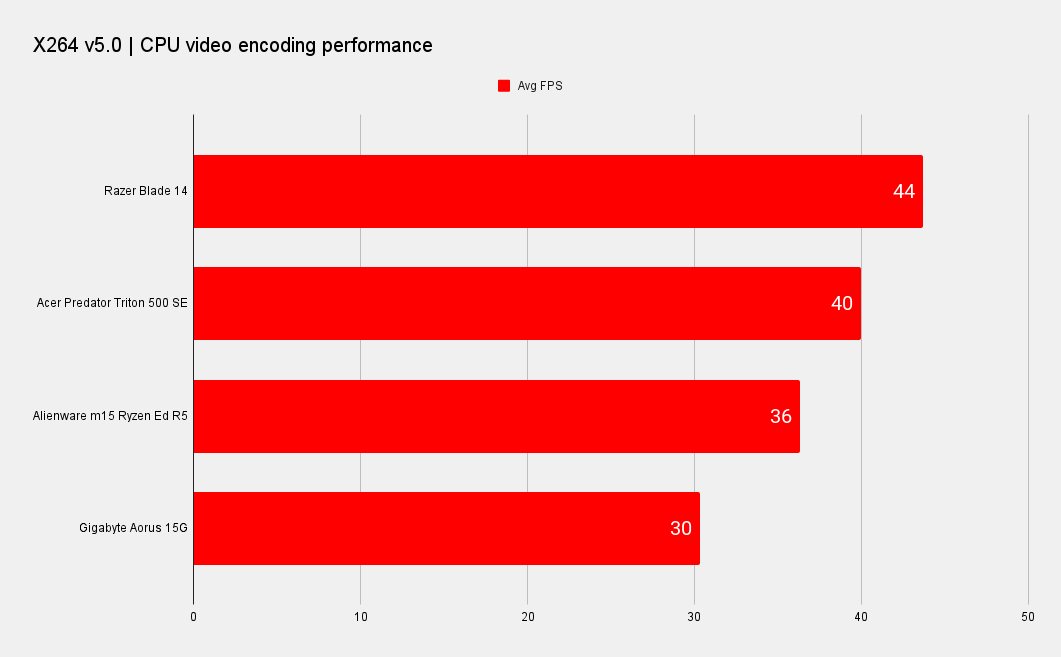
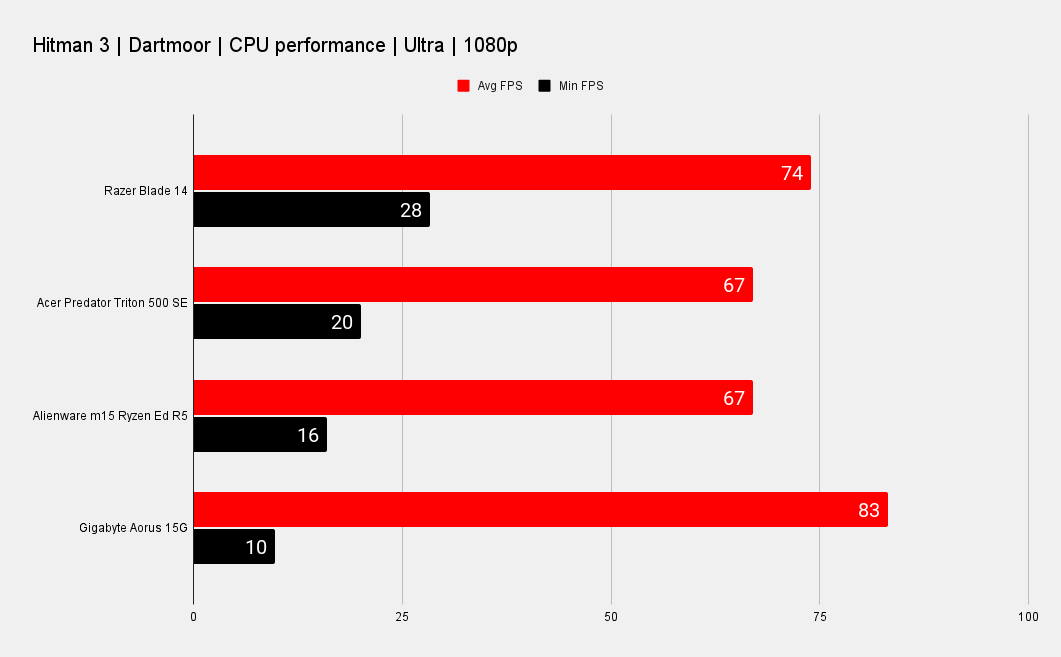

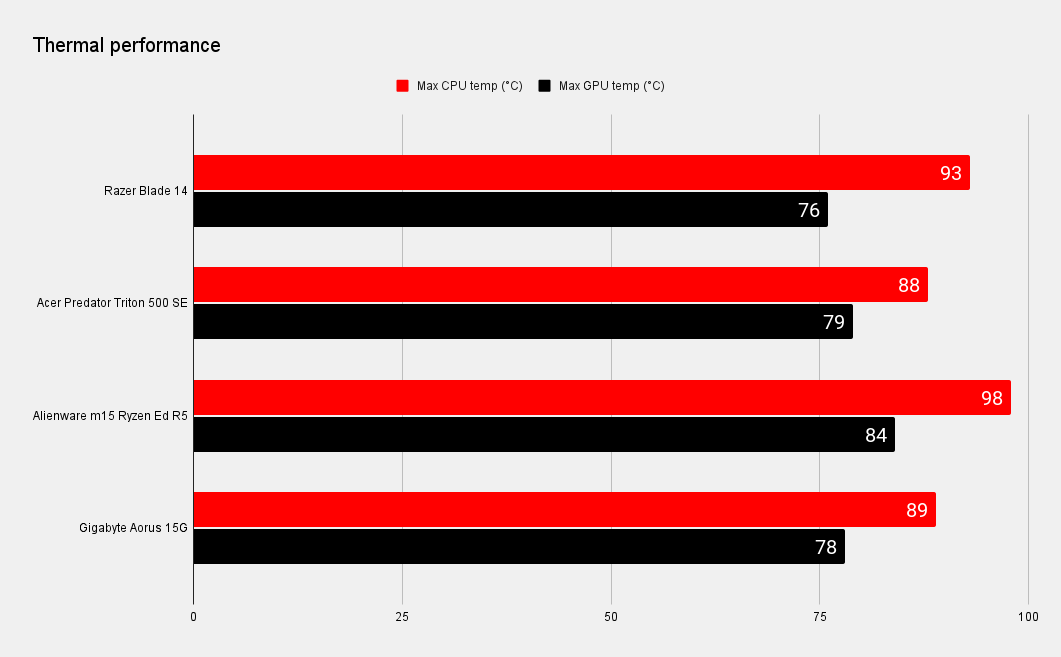
That means the Ryzen 9 5900HX can stand toe-to-toe with the latest octa-core processors from Intel's Tiger Lake H-series. Though we have seen some higher Cinebench scores from 11800H (shown here by the new Acer Triton 500 SE) and 11900H chips, those are always in far larger machines.
The sort of processing power the AMD CPU can offer, with all its Zen 3 cores aimed at a productivity problem, transforms this 14-inch machine into something of a mobile workstation. Which is great to see in a svelte Razer laptop you can throw into a messenger bag.
It is only a modest evolution in terms of CPU performance against the Ryzen 7 5800H chip used inside the Alienware m15 R5 Ryzen Edition machine, and tangibly better than the 10th Gen Comet Lake lake Core i7 10870H inside the Gigabyte laptop too.
Alongside the Razer Blade 14's modern AMD chip and Nvidia GPUs (either RTX 3060, RTX 3070, or RTX 3080) you also get 16GB DDR4-3200 and a 1TB Samsung NVMe SSD. There are two different screens available to the Blade 14; this 144Hz 1080p panel, and a 165Hz 1440p display. Now, I love me a QHD laptop display, but at 14 inches I'm more than happy with the pixel pitch of this 1080p panel when it comes to gaming.
I would say it's not the brightest, so if you're harbouring hopes for gaming outside on a warm summer's day, then the 1080p screen is not going to be for you.
But it does pair happily with the 100W RTX 3060 GPU. The whole package delivers gaming performance at eminently playable frame rates. All at the top settings, and in the latest games around. With Nvidia's DLSS magic increasingly an option too, the Blade 14 has a lot in its locker when it comes to gaming performance.
Gaming performance







Against a pair of other RTX 3060-powered notebooks—the Acer and Alienware machines—the Blade 14 is able to hold its own in the GPU benchmarks. Those two are also sporting slightly higher spec versions too, with the Acer sporting a 105W TDP chip and the Alienware using a 125W RTX 3060.
We've also shown the Gigabyte Aorus 15G with a 105W RTX 3070 GPU at its heart for reference. At 1080p you can see how ultra competitive the lower-spec Nvidia graphics silicon is when it comes to gaming.
In terms of general battery life, Razer likes to talk about 12 hours of uptime, though that is most definitely not the case when gaming. Our PCMark 10 test highlights an actual gaming time of just under 80 minutes. And you thought the Steam Deck's two hour minimum looked bad… all the gaming laptops we've tested in the last year slide below the two hour mark.
But if you're looking for the Blade 14 to cross between your gaming and office lives then it can absolutely do that. With the AMD iGPU in play then you will get a lot closer to that 12-hour mark in general use. Hell, even the Blade 15 can last an entire day in the office away from the plug.
The Blade 14 does, however, retain the green Razer logo on the back of the screen, so there's none of the under-the-radar branding of the almost invisible logo on Razer's Stealth 13 notebooks.
In the end, with the fantastic Razer chassis shrunk down to a 14-inch aesthetic, and as a notebook packed with the latest AMD and Nvidia components, the Blade 14 makes for an incredibly compelling machine. And, at under $1,800 for the RTX 3060 version, it's not a bad price either.

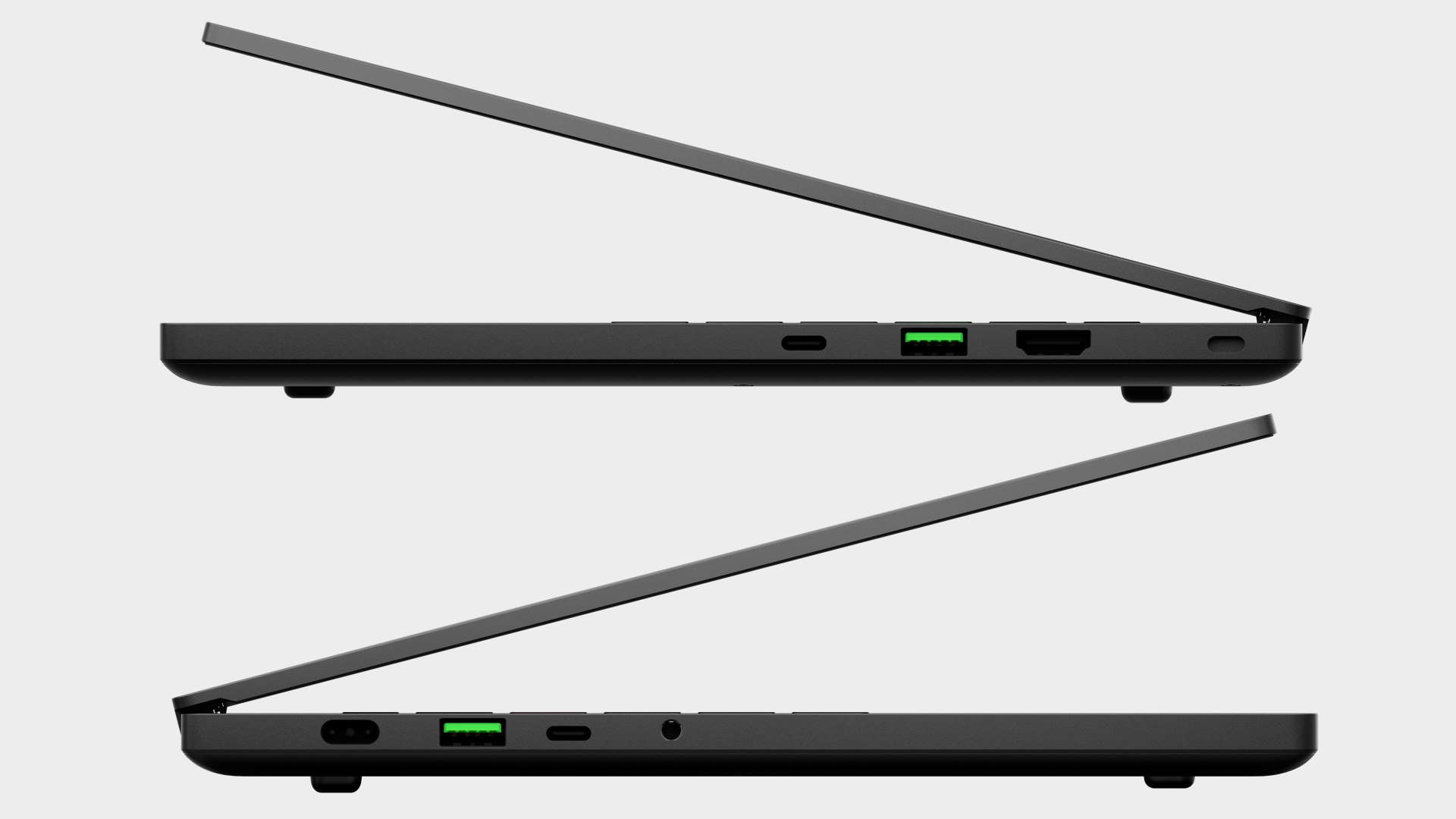
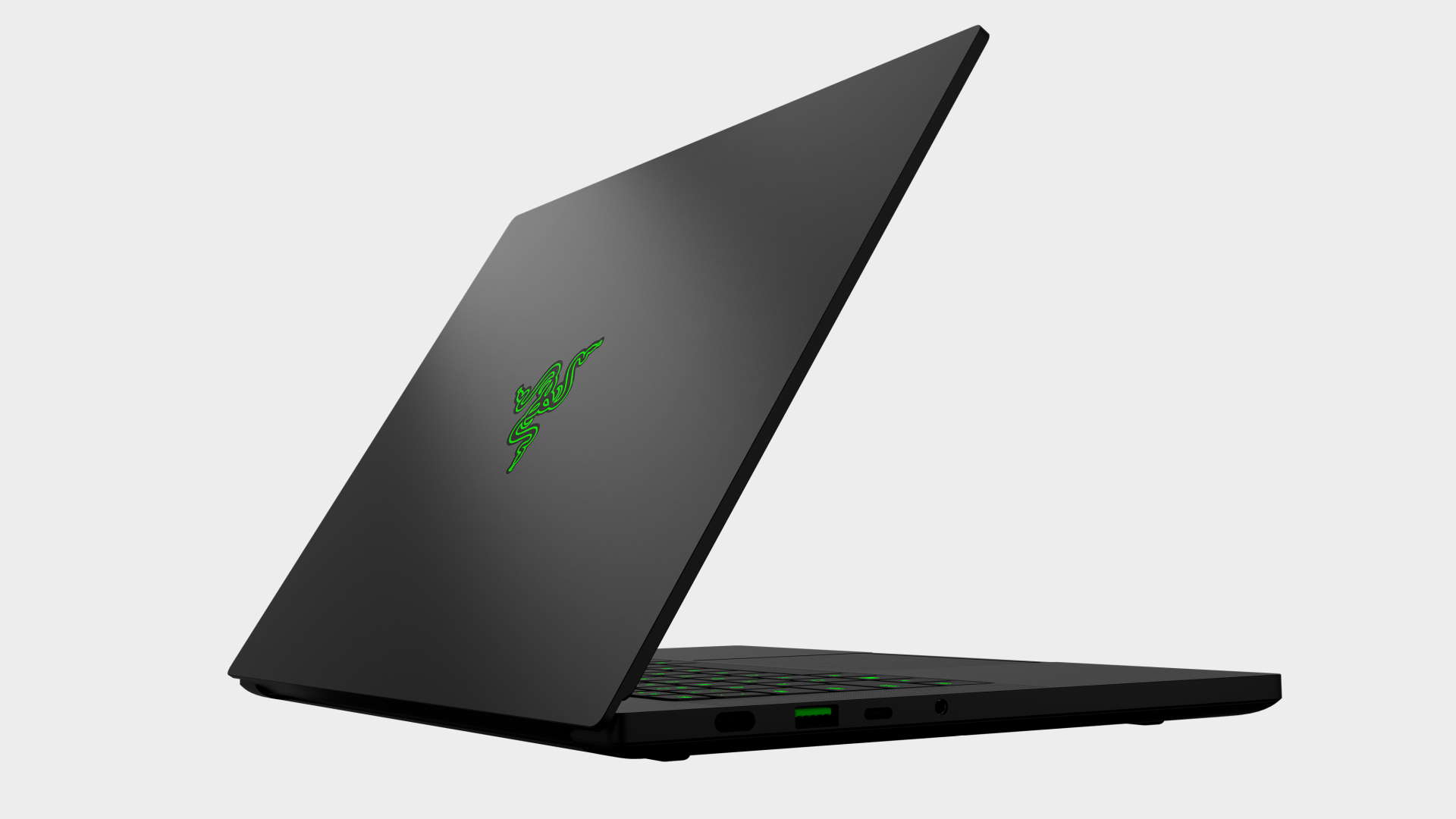
The criminally underused 14-inch form factor deserves to become one of the biggest sellers in Razer's extensive lineup.
But it's also a little frustrating. Not the actual system itself, but the fact that this is the only way you can get hold of an AMD-based Razer laptop. The Ryzen 9 5900HX is a fantastic mobile CPU, and one that would make a great part for either the Blade 15, or the more productivity focused Blade 17 Pro ranges. But it's only available in this one, admittedly excellent design, and I think that's a shame.
The PC is all about choice, and Razer finally giving us the choice to use an AMD CPU is great, but it feels like only a half measure, with the company either not able, or not willing, to go with the Zen silicon full bore across its entire portfolio of gaming laptop.
Ring-fencing the AMD processor within the bounds of the solitary Blade 14 lineup feels like a good way to ensure that there is no point where Intel and AMD CPUs are competing for customers within a single machine. And that's a good way to keep your long-time industry partners happy while still offering a hint of an alternative.
Still, it's notable we've heard nothing from Razer about a potential Blade 14 that uses an AMD discrete Radeon GPU alongside that Ryzen CPU. That might be a step too far.
But, forgetting all the politics, the Razer Blade 14 itself is excellent, and is one of the most desirable gaming laptops I've had in my hands this year. Maybe ever. The criminally underused 14-inch form factor also deserves to become one of the biggest sellers in Razer's extensive lineup of laptops. And if this notebook becomes the success it ought to be, then the company may end up having to make some difficult choices about what CPUs it offers, and where.
The choice you have to make, though, is which graphics card to go with. Sure, the RTX 3080 is quicker, but it leaves a lot more gaming performance on the workshop floor. That's why the cheaper RTX 3060, with its full-blooded frame rates, get my vote every day.
The 14-inch frame, in classic Razer Blade style, makes for my ideal gaming laptop form factor. Paired with the Ryzen CPU, and a reasonable GPU, the Blade 14 is a stunningly good, ultra-desirable machine with the power to cope with anything I could throw at it.

Dave has been gaming since the days of Zaxxon and Lady Bug on the Colecovision, and code books for the Commodore Vic 20 (Death Race 2000!). He built his first gaming PC at the tender age of 16, and finally finished bug-fixing the Cyrix-based system around a year later. When he dropped it out of the window. He first started writing for Official PlayStation Magazine and Xbox World many decades ago, then moved onto PC Format full-time, then PC Gamer, TechRadar, and T3 among others. Now he's back, writing about the nightmarish graphics card market, CPUs with more cores than sense, gaming laptops hotter than the sun, and SSDs more capacious than a Cybertruck.


